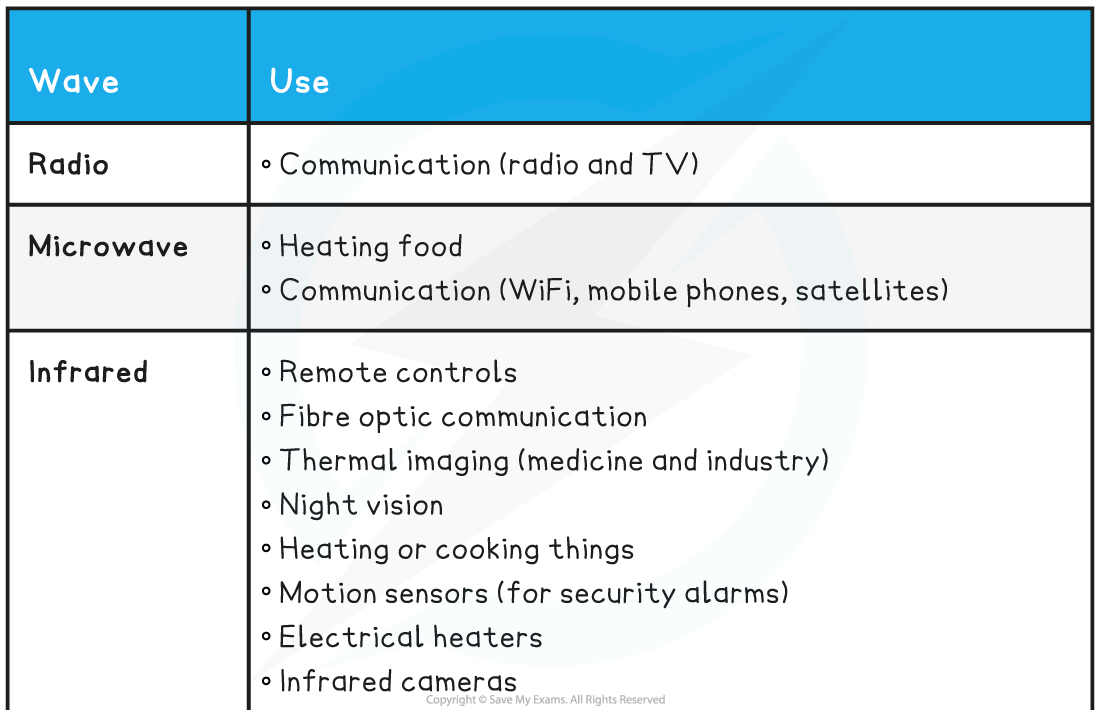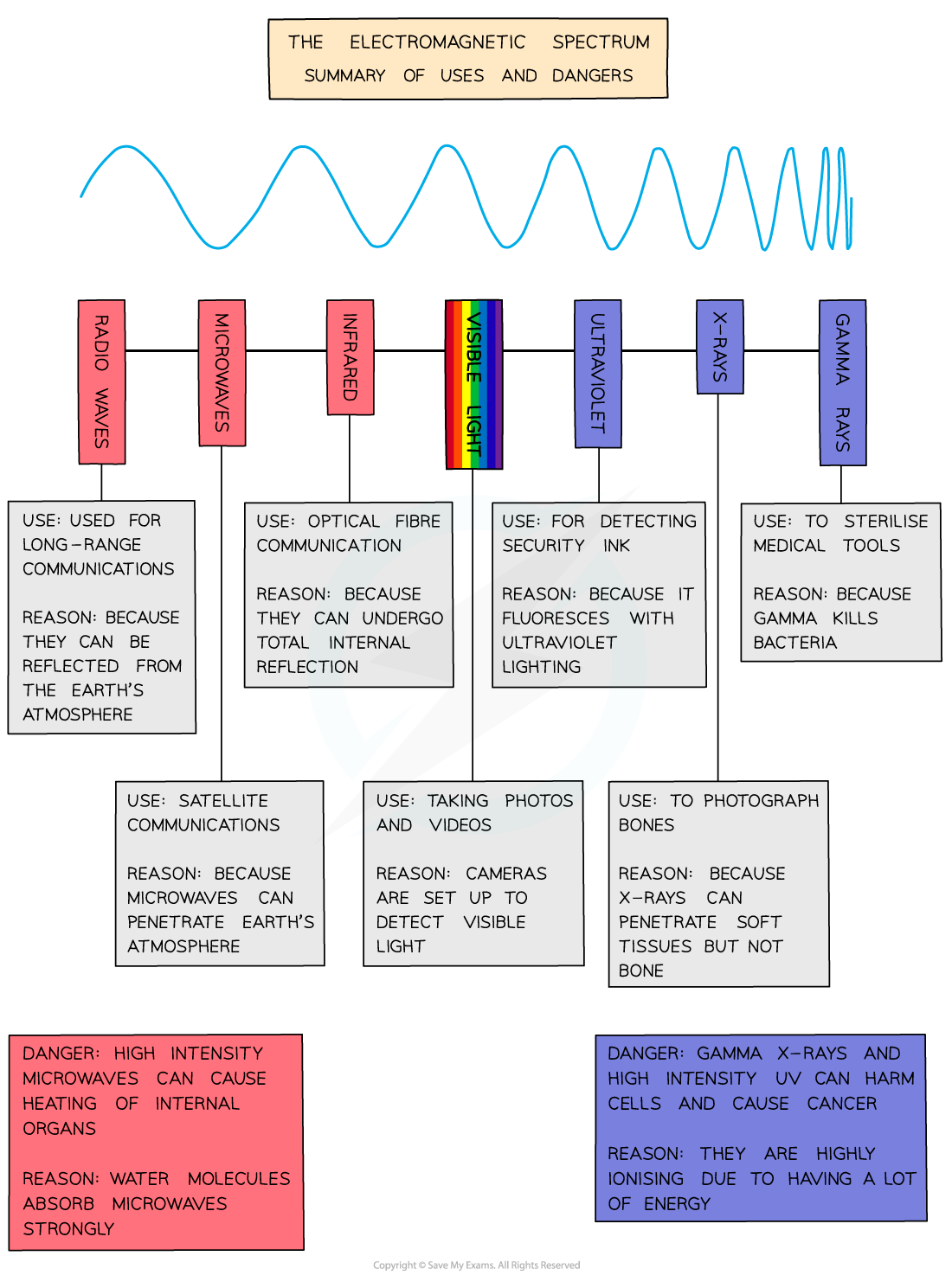- 翰林提供学术活动、国际课程、科研项目一站式留学背景提升服务!
- 400 888 0080
Edexcel IGCSE Physics 复习笔记 3.1.6 Applications of EM Waves
Edexcel IGCSE Physics 复习笔记 3.1.6 Applications of EM Waves
Applications of EM Waves
- Electromagnetic waves have a variety of uses and applications
- The main ones are summarised in the table below:
Applications of EM Waves Table

- A summary of the uses and dangers of different EM waves are summarised in the diagram below:

Uses and dangers of the electromagnetic spectrum
Radio Waves & Microwaves
- These two parts of the spectrum share a lot of similarities and uses
- Their main uses concern wireless communication – in fact many things that people often assume use radio waves actually use microwaves (e.g. WiFi, radar, mobile phones, satellite communications…)
- At very high intensities microwaves can also be used to heat things
- This is what happens in a microwave oven
Infrared
- Infrared is emitted by warm objects and can be detected using special cameras (thermal imaging cameras). These can be used in industry, in research and also in medicine
- Many security cameras are capable of seeing slightly into the infrared part of the spectrum and this can be used to allow them to see in the dark: Infrared lights are used to illuminate an area without being seen, which is then detected using the camera
- Remote controls also have small infrared LEDs that can send invisible signals to an infrared receiver on a device such as a TV
- Infrared travels down fibre optic cables more efficiently than visible light, and so most fibre optic communication systems use infrared
Visible
- Visible light is the only part of the electromagnetic spectrum that the human eye can see
- The human eye can detect wavelengths from 750 nanometres (red light) up to 380 nanometres (violet light)
Ultraviolet
- Ultraviolet is responsible for giving you a sun tan, which is your body’s way of protecting itself against the ultraviolet
- When certain substances are exposed to ultraviolet, they absorb it and re-emit it as visible light (making them glow)
- This process is known as fluorescence. Fluorescence can be used to secretly mark things using special ink – in fact most bank notes have invisible fluorescent markings on them
- Fluorescent light bulbs also use this principle to emit visible light
X-rays
- The most obvious use of x-rays is in medicine
- X-rays are able to pass through most body tissues, but are absorbed by the denser parts of the body, such as bones
- When exposed to x-rays the bones can a shadow which can be seen using a special x-ray detector or using photographic film
Gamma Rays
- Gamma rays are very dangerous and can be used to kill cells and living tissue
- If these gamma rays are carefully aimed at cancerous tissue they can be very effective at killing it
- Gamma rays can also be used to sterilise things by killing off the bacteria
转载自savemyexam

早鸟钜惠!翰林2025暑期班课上线

最新发布
© 2025. All Rights Reserved. 沪ICP备2023009024号-1








